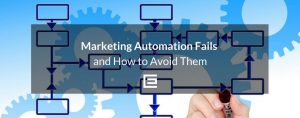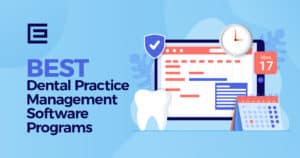Analytics software is like having a super-smart assistant that helps businesses make sense of all the data they’re swimming in. Imagine a toolbox packed with clever gadgets – that’s what analytics software is. It’s not just about gathering and sorting data; it’s about diving deep into it, finding patterns, and turning those numbers into insights you can actually use.
Think of it as a spectrum. On one end, you’ve got the straightforward tools that handle the basics of data analysis. On the other end, there are these ultra-sophisticated systems that can predict future trends and knit together complex data from different sources. It’s all about using smart algorithms, machine learning, and stats to pull out the nuggets of gold from a mountain of information.
Key Components of Analytics Software
- Data Collection and Integration: Gathers data from various sources and consolidates it into a unified format for analysis.
- Data Processing: Utilizes algorithms to sort, filter, and prepare data for analysis.
- Analysis and Interpretation: Employs statistical and machine learning techniques to identify patterns, trends, and correlations.
- Visualization and Reporting: Presents data in an easily digestible format, often through graphs, charts, and dashboards.
The Role of Analytics Software in Modern Business
In the era of big data, analytics software has become an indispensable tool for businesses across all industries. The ability to quickly and accurately analyze large datasets is no longer a luxury but a necessity for staying competitive in today’s fast-paced market.
Enhancing Decision-Making
The primary importance of analytics software lies in its capacity to enhance decision-making. By providing deep insights into customer behavior, market trends, and operational efficiency, it empowers businesses to make informed, data-driven decisions. This shift from intuition-based to data-driven strategies can significantly improve a company’s responsiveness to market changes, customer needs, and internal process improvements.
Driving Business Growth and Innovation
Analytics software plays a pivotal role in identifying growth opportunities and driving innovation. By analyzing market trends and consumer patterns, businesses can uncover new areas for expansion and innovation. This proactive approach to market analysis helps companies to stay ahead of the curve, adapting to new challenges and seizing opportunities as they arise.
Streamlining Operations
Beyond external market insights, analytics software is instrumental in streamlining internal operations. It can identify inefficiencies in processes, optimize supply chain management, and enhance resource allocation. This operational efficiency not only reduces costs but also improves overall productivity and performance.
Personalizing Customer Experience
In the age of personalization, analytics software enables businesses to tailor their products and services to meet the unique needs and preferences of their customers. By analyzing customer data, companies can create personalized marketing campaigns, recommend products, and improve customer service, leading to increased customer satisfaction and loyalty.
Key Features of Analytics Software
Data Collection and Integration Capabilities
Centralizing Diverse Data Sources
One of the most critical features of analytics software is its ability to collect and integrate data from a myriad of sources. In today’s digital landscape, data is generated from various touchpoints – social media interactions, e-commerce transactions, CRM systems, and IoT devices, to name a few. Analytics software efficiently aggregates this data, providing a consolidated view of information from disparate sources. This integration is pivotal for businesses to gain a holistic understanding of their operations and market.
Ensuring Data Accuracy and Consistency
The software’s integration capabilities also ensure the accuracy and consistency of data. By funneling data through a single platform, it eliminates discrepancies that often arise from using multiple, disconnected systems. This uniformity is crucial for maintaining the integrity of data analysis and insights.
Advanced Data Processing and Machine Learning Algorithms
Uncovering Deep Insights
The heart of analytics software lies in its advanced data processing capabilities, powered by sophisticated machine learning algorithms. These algorithms can sift through massive datasets, identifying patterns, trends, and anomalies that would be impossible to detect manually.
Predictive Analytics and Forecasting
Beyond just analyzing past and present data, these tools are adept at predictive analytics – forecasting future trends and behaviors. This feature is invaluable for businesses in strategizing and planning, as it provides foresight into potential market shifts, customer behavior changes, and emerging opportunities.
User-Friendly Interfaces and Visualization Tools
Simplifying Complex Data
A hallmark of top-tier analytics software is its user-friendly interface. The power of advanced analytics is fully harnessed only when it is accessible to decision-makers across an organization, not just data scientists. These interfaces often include intuitive dashboards, drag-and-drop features, and clear navigation, making it easier for non-technical users to understand and utilize complex data.
Visualizing Data for Better Comprehension
Coupled with user-friendly interfaces are robust visualization tools. These tools transform complex data sets into graphical representations like charts, graphs, and heat maps. Visualizations make it easier to comprehend complex data patterns and communicate findings effectively across the organization, facilitating better-informed decision-making.
Customization and Scalability
Tailoring to Specific Business Needs
Customization is another key feature of analytics software, allowing businesses to tailor the tools to their specific needs. Whether it’s custom dashboards, specific reporting formats, or unique data processing requirements, the software can be adapted to fit the unique context of each business.
Growing with the Business
Scalability is equally important. As businesses grow, their data analytics needs evolve. Scalable analytics software can handle increasing volumes of data and more complex analysis requirements without compromising performance. This adaptability ensures that businesses can continue to rely on their analytics tools as they expand and their data ecosystems become more intricate.
Benefits of Using Analytics Software
Improved Decision-Making Through Data-Driven Insights
Empowering Informed Choices
One of the most significant benefits of analytics software is its ability to enhance decision-making processes. In an era where data is king, having the capability to sift through and analyze vast amounts of information is invaluable. Analytics software provides businesses with data-driven insights, ensuring that decisions are based on factual, up-to-date information rather than intuition or guesswork.
Reducing Risks and Uncertainties
By leveraging the power of analytics, companies can significantly reduce risks and uncertainties associated with business decisions. Predictive analytics, a feature of many analytics platforms, allows businesses to forecast future trends, customer behaviors, and market dynamics, leading to more strategic and calculated decision-making.
Enhanced Operational Efficiency and Productivity
Streamlining Business Processes
Analytics software plays a crucial role in enhancing operational efficiency and productivity. By analyzing internal processes and workflows, the software can identify bottlenecks and inefficiencies, allowing businesses to optimize operations. This optimization can lead to significant cost savings and improved resource allocation.
Data-Driven Performance Management
Moreover, analytics tools enable businesses to monitor and measure performance across various departments and teams. By providing real-time data and insights, managers can make swift adjustments to improve performance, leading to a more agile and responsive organizational structure.
Competitive Advantage and Market Trend Analysis
Staying Ahead in a Competitive Landscape
In today’s fast-paced business environment, maintaining a competitive edge is essential. Analytics software provides companies with the tools to analyze market trends and customer preferences, giving them a leg up on the competition. By understanding the market and anticipating changes, businesses can develop innovative strategies and products that meet evolving customer needs.
Identifying Opportunities for Growth
Additionally, analytics software aids in uncovering new market opportunities. Through detailed analysis of market data, businesses can identify untapped areas, emerging trends, and potential areas for expansion. This proactive approach to market analysis ensures that companies are not only keeping pace with their competitors but are positioned to lead the market.
Choosing the Right Analytics Software
Selecting the appropriate analytics software is a critical decision for businesses looking to leverage data for strategic advantage. Several key factors must be considered to ensure the software aligns with the organization’s needs and objectives.
Factors to Consider
Scalability
- Adapting to Growth: The chosen analytics software should be able to grow with your business. Scalability is crucial as it determines how well the software can handle increasing volumes of data and more complex analytical tasks as your business expands.
- Future-Proofing Your Investment: Investing in scalable analytics software ensures that as your business evolves, your data analysis capabilities can adapt without the need for a complete system overhaul.
Data Integration
- Seamless Data Consolidation: The ability to integrate data from various sources is essential. The software should be capable of pulling data from different systems and platforms, ensuring a unified and comprehensive data analysis process.
- Enhancing Data Accuracy: Effective data integration not only simplifies the analytical process but also enhances the accuracy and reliability of the insights generated.
User-Friendliness
- Accessibility for All Users: The software should have an intuitive interface that is accessible to users of all skill levels, not just data scientists. User-friendly software ensures broader adoption across the organization, maximizing the value of your investment.
- Training and Learning Curve: Consider the learning curve associated with the software. A user-friendly interface reduces the time and resources needed for training employees.
Security and Data Governance Considerations
Ensuring Data Security
- Robust Security Features: In an age where data breaches are increasingly common, the chosen analytics software must have robust security measures in place to protect sensitive information.
- Compliance with Regulations: Ensure that the software complies with relevant data protection regulations, such as GDPR, to avoid legal complications.
Data Governance
- Quality and Consistency: Good data governance ensures the quality and consistency of the data used for analysis. The software should support data governance policies and facilitate the management of data across its lifecycle.
Vendor Reputation and Customer Support
Assessing Vendor Credibility
- Proven Track Record: Look for vendors with a strong reputation in the industry. Check for case studies, customer testimonials, and independent reviews to gauge the effectiveness and reliability of their software.
- Innovation and Industry Standing: Consider vendors who are known for innovation and staying ahead of technological advancements in analytics.
Importance of Customer Support
- Responsive Support: Effective customer support is crucial, especially in scenarios where immediate technical assistance is required. Evaluate the vendor’s support infrastructure, including availability, responsiveness, and expertise.
- Training and Resources: Consider whether the vendor provides adequate training materials, tutorials, and resources to help your team make the most of the software.
FAQs
What is the Difference Between Analytics Software and Business Intelligence Tools?
- Purpose and Functionality: Business Intelligence (BI) tools are primarily designed to aggregate, analyze, and present data in an informative way, often focusing on descriptive analytics – what has happened in the past. Analytics software, on the other hand, not only encompasses these BI capabilities but also extends to predictive and prescriptive analytics, which focus on future predictions and recommendations.
- Scope of Analysis: While BI tools are excellent for providing dashboards, reports, and data visualizations for immediate insights, analytics software delves deeper into data exploration, employing advanced techniques like machine learning for more complex analyses.
How Does Analytics Software Help in Decision-Making?
- Data-Driven Insights: Analytics software processes large volumes of data to uncover underlying patterns and trends. These insights inform strategic decisions, making them more data-driven rather than based on intuition or incomplete information.
- Predictive Capabilities: By predicting future trends and behaviors, analytics software allows businesses to anticipate market changes, customer needs, and potential risks, leading to more proactive and informed decision-making.
Can Small Businesses Benefit from Analytics Software?
- Accessibility and Scalability: Modern analytics software is increasingly accessible to businesses of all sizes. Small businesses can leverage these tools to gain insights into customer behavior, market trends, and operational efficiency.
- Cost-Effective Solutions: Many analytics platforms offer scalable pricing models, making them cost-effective for small businesses. The insights gained can lead to better resource allocation, targeted marketing strategies, and overall business growth.
What are the Challenges in Implementing Analytics Software?
- Data Quality and Integration: One of the primary challenges is ensuring the quality and integration of data from various sources. Poor data quality can lead to inaccurate analyses and misleading insights.
- Skillset and Training: The effective use of analytics software requires a certain level of expertise. Businesses may face challenges in training staff or may need to hire specialists to fully leverage the software’s capabilities.
- Cost and Resource Allocation: The initial investment in analytics software and the ongoing costs for maintenance, upgrades, and training can be significant. Allocating resources efficiently while ensuring a good return on investment is a key challenge for many businesses.
Need digital marketing or SEO services for your business website?
Learn how TheeDigital can help with your SEO and Digital Marketing needs.
Tags: Digital Marketing






